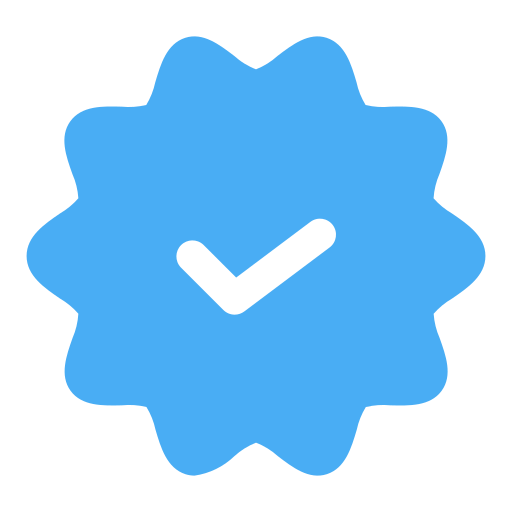Welcome to another Reel Unlimited blog, Reel Unlimited is a design subscription service for startups and agencies serving tech clients who need professional design quality that competes in sophisticated markets. We provide unlimited graphic design, video editing, and Webflow development for businesses that can’t afford expensive agencies but need design quality that matches their competitive environment. In this article, we’ll explore when design subscriptions serve businesses better than in-house designers and vice versa, helping you make the right decision for your specific situation.
Special offer mention: If you’re looking for design services that provide the right balance of professional quality and operational flexibility, stick around until the end – we have a special 25% discount offer for new clients.
Your startup just landed a major client meeting next week, but your “designer friend” disappeared after delivering logo concepts that look nothing like what you discussed. Meanwhile, your competitor shows up with polished presentations and marketing materials that clearly came from professional creative teams. You’re stuck choosing between unreliable freelancers, expensive agencies, or hiring someone full-time when you’re not even sure about ongoing design volume.
This scenario highlights the fundamental challenge growing businesses face: accessing professional design quality without operational complexity or budget uncertainty. The traditional options – hiring in-house designers or working with freelancers – each create different problems that don’t match how modern businesses actually operate.
The decision between design subscriptions and in-house designers isn’t about which option is theoretically better. It’s about which approach matches your specific business stage, operational patterns, and competitive needs. Different companies at different growth phases need different solutions.
This article examines when each approach provides genuine value, what trade-offs you’ll face with either choice, and how to match your decision to your actual business reality rather than theoretical needs.
Understanding Design Access for Different Business Stages

Modern businesses need professional design work, but the best approach for accessing creative talent depends entirely on your company’s stage, industry, and operational patterns. Understanding these factors helps determine whether design subscriptions or in-house hiring makes sense.
Early-stage startups typically need occasional design work with tight budgets, focusing on essential materials like branding, website assets, and basic marketing materials. Growth-stage companies require consistent design output to support scaling operations, investor presentations, and competitive market presence. Established businesses need sophisticated creative capabilities while managing costs and maintaining quality standards.
The key considerations include design volume predictability, budget flexibility, quality control needs, collaboration needs, and long-term creative strategy. Different business stages prioritize these factors differently, making certain approaches more practical than others.
Rather than choosing based on what sounds good in theory, successful businesses match their design access strategy to their actual operational reality and competitive environment.
When Design Subscriptions Work Better Than In-House Hiring
Design subscriptions excel in specific business scenarios where flexibility, cost predictability, and access to diverse expertise matter more than complete creative control or deep brand integration.
Unpredictable Design Volume
Companies with variable design needs – seasonal businesses, project-based agencies, or startups with fluctuating marketing activities – benefit from subscription flexibility. When you might need intensive design work for product launches followed by quiet periods, subscriptions allow scaling up and down without employment complications.
Marketing teams managing multiple campaigns simultaneously appreciate being able to request various assets without worrying about keeping someone busy full-time. The predictable monthly cost eliminates budget surprises while providing access to professional work when needed.
Budget and Cash Flow Management
Startups and growing companies often lack the financial resources for full-time designer salaries, benefits, equipment, and ongoing employment costs. Design subscriptions provide access to professional creative work for predictable monthly fees that don’t require payroll commitments or office space considerations.
The ability to pause subscriptions during slower periods or adjust service levels based on actual needs provides operational flexibility that traditional employment relationships don’t offer. This approach particularly benefits businesses with seasonal cash flow or project-based revenue patterns.
Diverse Creative Skill Needs
Businesses needing various types of design work – brand identity, web design, video editing, social media graphics, and marketing materials – often struggle to find individual designers with expertise across all areas. Subscription services provide access to specialized teams with different creative skills under one relationship.
Rather than managing multiple freelancers or hiring designers with incomplete skill sets, subscriptions offer broad creative capabilities without coordination complexity. This approach works well for agencies serving diverse clients or companies with varied creative needs.
Geographic and Time Zone Challenges
Companies operating across different regions or needing design work outside standard business hours benefit from subscription services with global team coverage. Rather than limiting creative resources to local talent pools, subscriptions provide access to international expertise with time zone alignment.
This geographic flexibility particularly helps businesses expanding into new markets or agencies serving clients across different regions where local hiring might be impractical or expensive.
When In-House Designers Provide Better Value
In-house hiring makes sense for specific business situations where creative control, brand consistency, deep collaboration, and strategic integration matter more than cost flexibility or diverse skill access.
High-Volume, Consistent Design Needs
Companies requiring daily design work – e-commerce businesses, media companies, or large marketing departments – often justify full-time creative positions through sheer project volume. When design needs are predictable and substantial, in-house hiring can provide better cost-per-project value than ongoing subscriptions.
The ability to dedicate full-time attention to company-specific projects, brand guidelines, and strategic initiatives makes in-house hiring practical for businesses with consistent creative needs that utilize someone’s complete working capacity.
Deep Brand Integration Needs
Businesses where design work requires intimate understanding of company culture, complex product lines, or nuanced brand positioning benefit from in-house creative teams. When projects demand deep context about business strategy, customer personas, or market positioning, dedicated employees often produce more aligned results.
In-house designers develop institutional knowledge about brand standards, customer preferences, and business objectives that external providers struggle to replicate. This depth particularly matters for companies with sophisticated brand strategies or complex product ecosystems.
Immediate Collaboration and Iteration
Companies where design work integrates closely with product development, sales processes, or customer feedback loops need immediate creative response capabilities. When marketing campaigns require real-time adjustments or product launches demand rapid iteration, in-house teams provide responsive collaboration that external providers can’t match.
The ability to attend internal meetings, participate in strategic discussions, and adjust creative work based on immediate business developments makes in-house hiring valuable for companies where design decisions integrate closely with other business functions.
Competitive Creative Control
Businesses competing in markets where creative differentiation drives customer acquisition – fashion, consumer products, or creative services – often need complete control over creative processes and intellectual property. In-house teams provide creative oversight and quality control that external relationships cannot guarantee.
When your creative output becomes a core competitive advantage rather than supporting business operations, in-house hiring allows the creative control and quality assurance that subscription services cannot provide consistently.
Direct Comparison: Key Decision Factors
Understanding the practical trade-offs between design subscriptions and in-house hiring helps businesses make informed decisions based on actual operational priorities rather than theoretical advantages.
Cost Structure Differences
Design Subscriptions: Predictable monthly costs with no payroll taxes, benefits, or equipment expenses. Typical range: $800-$3,000 monthly depending on service level. Costs remain fixed regardless of actual project volume, providing budget certainty but potentially poor value during slow periods.
In-House Designers: Variable total costs including salary ($40,000-$80,000+ annually), benefits (20-30% additional), equipment, software licenses, and office space. Hidden costs include recruitment, onboarding, and potential severance. Better cost-per-project value for high-volume situations but requires ongoing financial commitment regardless of business performance.
Quality and Consistency Trade-offs
Design Subscriptions: Professional quality with some variability between projects and designers. Limited ability to build deep brand knowledge or maintain perfect consistency across all materials. Quality depends on service provider’s team management and your feedback clarity.
In-House Designers: Potential for perfect brand alignment and consistency, but quality depends entirely on individual hiring decisions. Risk of skills gaps, creative limitations, or personality mismatches that affect all creative work. Complete quality control but also complete responsibility for creative results.
Operational Flexibility
Design Subscriptions: Easy to scale up, down, pause, or cancel based on business needs. No employment complications or severance concerns. Limited ability to prioritize urgent projects or adjust creative direction immediately. Work happens on their schedule and processes.
In-House Designers: Complete control over creative priorities, timing, and project focus. Ability to integrate design work with business strategy immediately. Employment obligations limit flexibility to adjust team size based on business performance. Difficult to change creative capabilities without hiring/firing decisions.
Strategic Integration
Design Subscriptions: Limited strategic input or business context understanding. Focus primarily on executing creative briefs rather than contributing to creative strategy. External relationship limits depth of business integration and strategic creative thinking.
In-House Designers: Potential for deep strategic contribution and business understanding. Ability to participate in business planning and provide creative input on strategic decisions. Success depends on individual capabilities and company culture integration.
How Professional Design Quality Affects Business Outcomes
Your design quality directly impacts customer perception, competitive positioning, and revenue opportunities in ways that affect long-term business success. When prospects compare your marketing materials against well-funded competitors, design quality becomes a credibility indicator that influences purchasing decisions.
Many growing businesses underestimate how design quality affects their ability to compete for enterprise clients, attract investor attention, or establish partnership opportunities. Professional creative work signals business sophistication and attention to detail that prospects use to evaluate company reliability and market position.
Companies competing in B2B markets particularly benefit from consistent design quality across sales presentations, marketing materials, and customer-facing communications. The cumulative effect of professional design work builds brand authority that supports pricing power and client relationships.
Reel Unlimited: Flexible Design Solutions for Growing Businesses
We work with startups, B2B SaaS companies, and agencies serving tech clients who need design quality that competes in sophisticated markets while maintaining operational flexibility and cost predictability.
Our approach bridges the gap between expensive in-house hiring and unreliable freelance relationships by providing dedicated creative teams with predictable pricing and professional quality standards. Rather than forcing businesses into rigid employment decisions or unpredictable project costs, we offer flexible options that match different operational patterns.
Graphics ($795/month): Unlimited graphic design and video editing for marketing materials, presentations, social media content, and brand assets. Perfect for businesses needing consistent creative output without full-time employment commitments or variable freelance costs.
Websites ($1,295/month): Website design plus Webflow development for landing pages, marketing websites, and product presentations. Essential for businesses needing professional web presence without managing separate design and development relationships.
Bundle ($1,995/month): Both services combined, providing everything needed for competitive market presence at a cost lower than most single full-time designer salaries including benefits and equipment.
Service Options:
- Monthly subscriptions for ongoing design needs with no long-term contracts
- 30-day packages for intensive project launches or seasonal campaigns
- 7-day trial with one completed project to evaluate our quality and communication before any commitment
White-Label Capabilities:
Agencies can deliver professional creative work under their brand while maintaining client relationships and profit margins. Our branded client portals and project management systems support agency operations without revealing underlying service relationships.
Geographic Team Coverage:
US/Canada, EU/UK, and Asia/Pacific team coverage ensures responsive communication during overlapping business hours rather than delays across major time differences that affect project quality and collaboration.
Making the Right Decision for Your Business Situation
Consider your specific operational patterns, competitive needs, and growth trajectory when evaluating design subscriptions versus in-house hiring. The right choice depends on matching service delivery models to your actual business reality.
Choose Design Subscriptions When:
- Design volume varies significantly between busy and slow periods
- Budget predictability matters more than creative control
- You need diverse creative skills without managing multiple relationships
- Geographic flexibility or time zone coverage provides operational advantages
- Avoiding employment complications and payroll commitments is important
- Professional quality at predictable costs supports business growth
Choose In-House Hiring When:
- Design volume consistently justifies full-time positions
- Deep brand integration and strategic creative input are essential
- Immediate collaboration and project prioritization control matter most
- Creative differentiation drives competitive advantage in your market
- Company culture and team integration affect creative quality
- Long-term creative capability development supports business strategy
Consider Hybrid Approaches When:
- Core creative work justifies in-house positions while overflow projects use subscriptions
- Specialized skills occasionally needed beyond in-house capabilities
- Geographic coverage needs exceed local talent availability
- Project variety demands creative skills beyond individual designer expertise
The decision ultimately depends on honest assessment of your design volume, quality needs, budget constraints, and operational priorities rather than theoretical preferences or industry assumptions.
Transform Your Creative Operations Into Competitive Advantages
Professional design quality provides competitive differentiation in markets where prospects regularly compare your materials against well-funded competitors. Whether you need marketing assets that compete effectively, websites that convert qualified prospects, or presentations that win enterprise clients, your creative quality directly impacts business results.
Special Offer for Our Readers: As promised, if you’re looking for design services that provide professional quality with operational flexibility, we’re offering 25% off your first month for new Reel Unlimited clients. Start your 7-day trial to experience professional design quality without employment complications, or explore our pricing with code BLOG25.
What You Get: Unlimited graphic design and video editing ($795/month), complete Webflow development ($1,295/month), or both services combined ($1,995/month). All plans include your 7-day trial with one completed project, so you can evaluate our quality and team communication before any ongoing commitment.
Bottom Line: Match Your Creative Strategy to Your Business Reality
Design subscriptions work well for businesses needing professional quality with operational flexibility, while in-house hiring serves companies requiring deep creative integration and strategic control. Neither approach is universally better – success comes from matching your creative access strategy to your actual business needs and competitive environment.
The businesses thriving in competitive markets are those that honestly assess their creative volume, quality needs, and operational patterns before choosing their approach. Whether that leads to subscription services, in-house hiring, or hybrid approaches, the key is alignment between your creative strategy and business reality.
For businesses seeking balance between professional quality and operational flexibility, design subscriptions provide strategic value without employment complexity. For others requiring deep creative integration and strategic control, in-house hiring better serves their specific needs.
Choose based on your actual operational patterns and competitive needs, and you’ll find the approach that best supports your business growth and market positioning.

